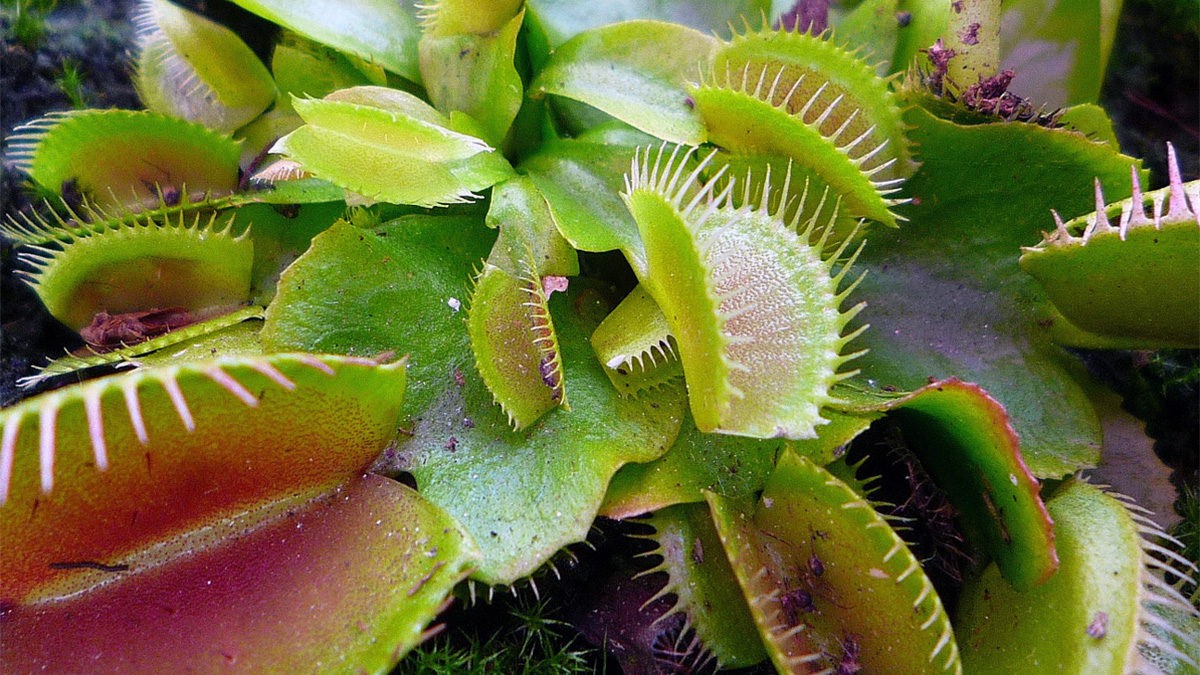Weird but Wonderful Carnivorous Plants

Carnivorous plants are some of the most fascinating species you can grow, adding a wild twist to any plant collection. With their unique traps and incredible survival strategies, they offer a glimpse into nature’s creativity. Here are five weird but wonderful carnivorous plants worth adding to your garden or indoor space.
1. Venus flytrap (Dionaea muscipula)
The Venus flytrap is probably the most famous carnivorous plant thanks to its dramatic snapping traps. Each hinged leaf closes quickly around an unsuspecting insect when triggered by sensitive hairs inside the trap. These fascinating plants prefer nutrient-poor soil, bright sunlight, and distilled or rainwater to stay healthy.
You can grow Venus flytraps outdoors in mild climates or indoors with strong light. Avoid feeding them human food, as this can harm their delicate digestive system. Regularly removing dead traps will help keep the plant looking tidy and strong.
Related: Simple Care Tips for Growing a Venus Flytrap
2. Pitcher plants (Sarracenia species)
Pitcher plants catch insects with their specialized tubular leaves, which act as pitfall traps filled with digestive enzymes. When bugs slip into the pitcher, they cannot climb out and are slowly broken down into nutrients the plant can absorb. Popular pitcher plants include Sarracenia purpurea and Sarracenia flava, both stunning in their bold shapes and patterns.
Pitcher plants grow best in a sunny location with damp, acidic soil, similar to their native bog habitats. Use distilled or rainwater, and never let the soil dry out completely. These plants also benefit from winter dormancy, so plan to give them a cooler rest period if grown outdoors.
3. Sundews (Drosera species)
Sundews use glistening tentacles covered in sticky droplets to trap and digest insects. These tiny beads resemble morning dew, giving the plant its name, while also serving as a lure for unsuspecting bugs. With their red-tipped tentacles and delicate leaves, sundews are among the most beautiful carnivorous plants.
Different sundew species thrive in varying levels of humidity, but most prefer bright, indirect sunlight. Keep their soil evenly moist and use only distilled or rainwater to avoid mineral buildup. Occasionally trimming old leaves helps them produce fresh growth.
4. Butterworts (Pinguicula species)
Butterworts have smooth, sticky leaves that catch small insects like gnats and fruit flies. Their leaves act as natural flypaper, and their digestive enzymes help break down the trapped prey. Along with their unusual carnivorous abilities, butterworts often bloom with charming flowers that resemble delicate violets.
These plants do well in bright, indirect light and prefer consistently moist soil with good drainage. Use a mineral-free water source and avoid heavy fertilization since they get nutrients from their insect diet. Butterworts are compact and fit beautifully on windowsills or plant shelves.
5. Cobra lily (Darlingtonia californica)
The cobra lily is one of the most intriguing carnivorous plants thanks to its hooded pitcher resembling a striking cobra. Inside the pitcher, a maze-like interior and false exits confuse insects, leading them deeper until they are digested. Native to cool, flowing bogs, the cobra lily is a challenge but a rewarding plant to grow for enthusiasts.
To succeed with a cobra lily, maintain cool roots and use flowing, cold water when possible. They like bright light without intense heat, as high temperatures can damage them. Mimicking their natural environment will give you the best chance of growing a healthy and impressive specimen.
Conclusion
Growing carnivorous plants is a rewarding adventure for any curious gardener. With the right setup and a little patience, these strange yet captivating plants will thrive and amaze you season after season. Give one of these incredible species a try and enjoy a truly one-of-a-kind gardening experience.
